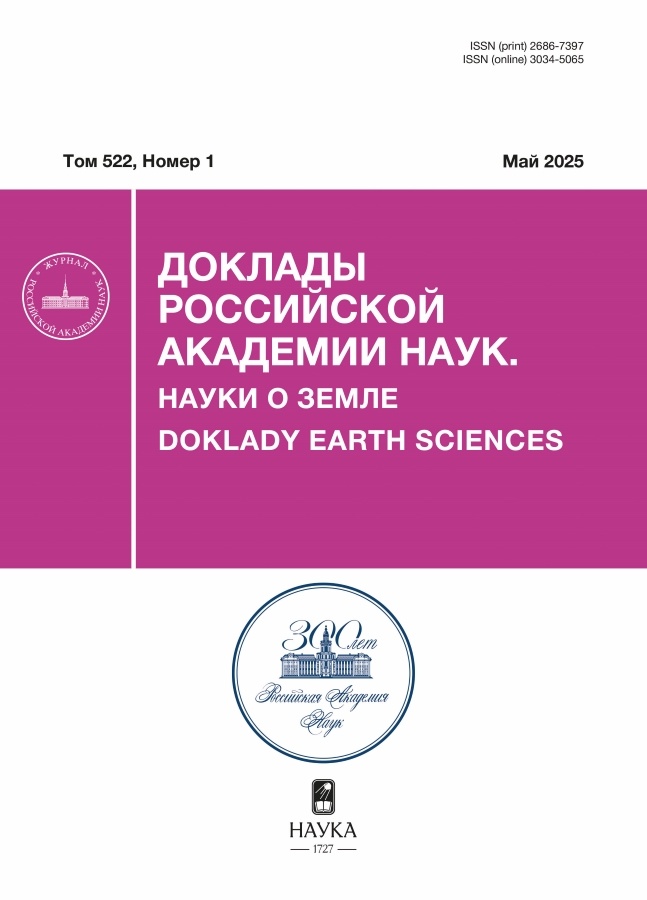EARTHQUAKE DINGGYE 07.01.2025 AT THE SOUTHERN TIBETAN PLATEAU: EXTENSION IN THE CONTINENTAL COLLISION ZONE
- Autores: Mikhailov V.O.1, Konvisar A.M.1,2, Timoshkina E.P.1, Smirnov V.B.1,2, Khairetdinov S.A.1
-
Afiliações:
- Schmidt Institute of Physics of the Earth
- Faculty of Physics, Lomonosov Moscow State University
- Edição: Volume 522, Nº 1 (2025)
- Páginas: 117-123
- Seção: SEISMOLOGY
- ##submission.dateSubmitted##: 15.10.2025
- ##submission.datePublished##: 15.12.2025
- URL: https://freezetech.ru/2686-7397/article/view/693284
- DOI: https://doi.org/10.31857/S2686739725050146
- ID: 693284
Citar
Texto integral
Resumo
Palavras-chave
Sobre autores
V. Mikhailov
Schmidt Institute of Physics of the Earth
Email: alexkonvisar@gmail.com
Moscow, Russia
A. Konvisar
Schmidt Institute of Physics of the Earth; Faculty of Physics, Lomonosov Moscow State University
Email: alexkonvisar@gmail.com
Moscow, Russia; Moscow, Russia
E. Timoshkina
Schmidt Institute of Physics of the Earth
Email: alexkonvisar@gmail.com
Moscow, Russia
V. Smirnov
Schmidt Institute of Physics of the Earth; Faculty of Physics, Lomonosov Moscow State University
Email: alexkonvisar@gmail.com
Moscow, Russia; Moscow, Russia
S. Khairetdinov
Schmidt Institute of Physics of the Earth
Email: alexkonvisar@gmail.com
Moscow, Russia
Bibliografia
- Буртман В.С. Геодинамика Тибета, Тарима и Тянь-Шаня в Позднем Кайнозое // Геотектоника. 2012. № 3. C. 18–46.
- Zheng G., Wang H., Wright T.J., Lou Y., Zhang R., Zhang W., Shi Ch., Huang J., Wei N. Crustal deformation in the India-Eurasia collision zone from 25 years of GPS measurements // J. Geophys. Res.: Solid Earth. 2017. № 122. P. 9290–9312. https://doi.org/10.1002/2017JB014465
- Wang L., Barbot S. Three-dimensional kinematics of the India–Eurasia collision. Commun. Earth Environ. 2023. 4. 164. https://doi.org/10.1038/s43247-023-00815-4
- Gao Y., Li M., Wu Z., Zhang K., Zuo J., Tian T., Wang S. Late Quaternary normal faulting along the western boundary fault of Peiku Co graben in southern Nyalam-Coqen rift: Implications for extensional deformation in southern Tibet and seismic hazard // J. Struct. Geol. 2024. № 181. P. 105087. http://dx.doi.org/10.1016/j.jsg.2024.105087
- Taylor M., Yin A. Active structures of the Himalayan-Tibetan orogen and their relationships to earthquake distribution, contemporary strain field, and Cenozoic volcanism // Geosphere. 2009. V. 5. № 3. P. 199–214. https://doi.org/10.1130/GES00217.1
- Pollitz F.F. Coseismic deformation from earthquake faulting on a layered spherical Earth // Geophys. J. Int. 1996. V. 125. № 1. P. 1–14. https://doi.org/10.1111/j.1365-246X.1996.tb06530.x
- Zelenin E.A., Bachmanov D.M., Garipova S.T., Trifonov V.G., Kozhurin A.I. The Active Faults of Eurasia Database (AFEAD): the ontology and design behind the continental-scale dataset // Earth System Science Data. 2022. V. 14. P. 4489–4503. http://dx.doi.org/10.5194/essd-14-4489-2022
- Kali E., van der Woerd J., Leloup P.H., Mahéo G., Arnaud N.O., Liu J., Chevalier M., Tapponnier P., Thuizat R. Extension in Central-South Tibet, insight from cosmogenic nuclide dating / AGU Fall Meeting Abstracts. 2010.
- Tian T., Wu Z. Recent prehistoric major earthquake event of Dingmucuo Normal fault in the southern segment of Shenzha-Dingjie Rift and its seismic geological significance // Geol. Rev. 2023. № 69. P. 53–55 (in Chinese with English abstract).
Arquivos suplementares










